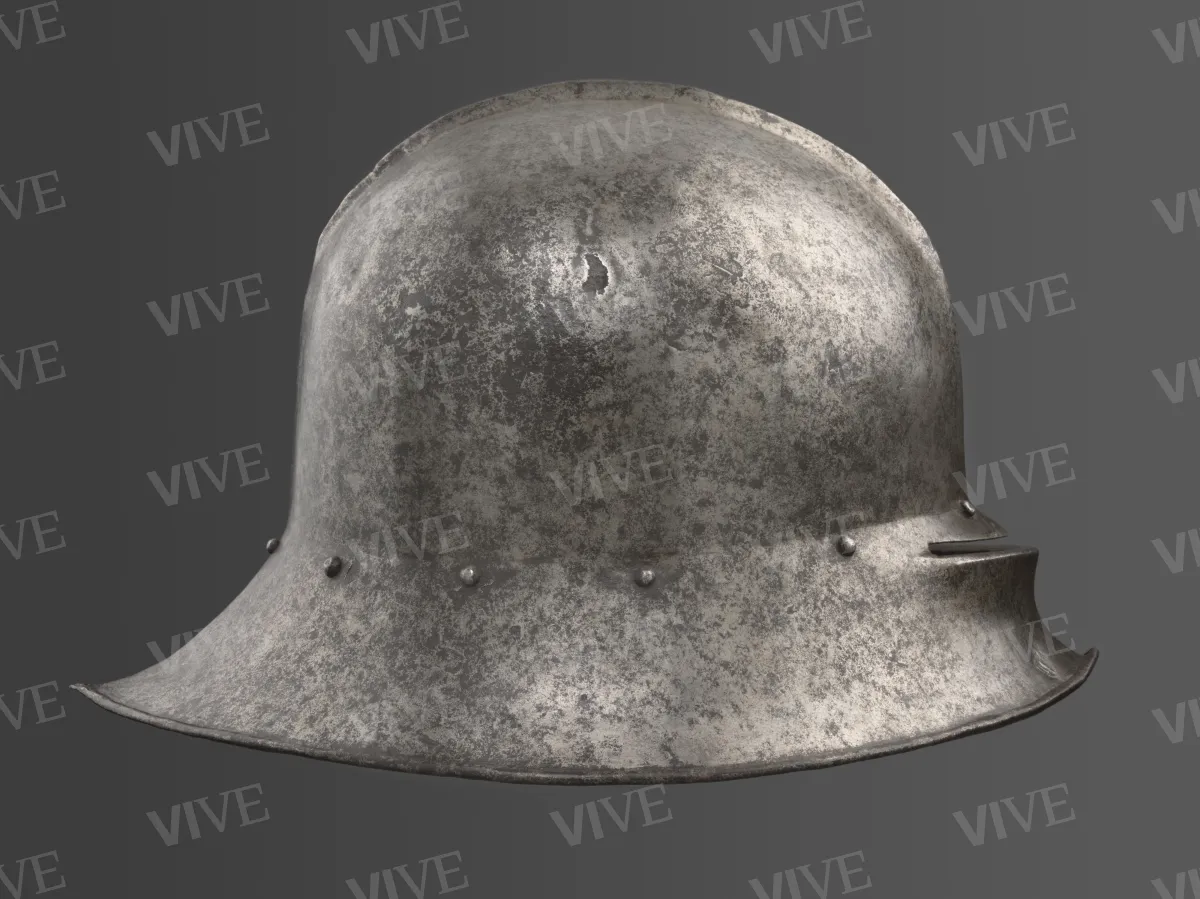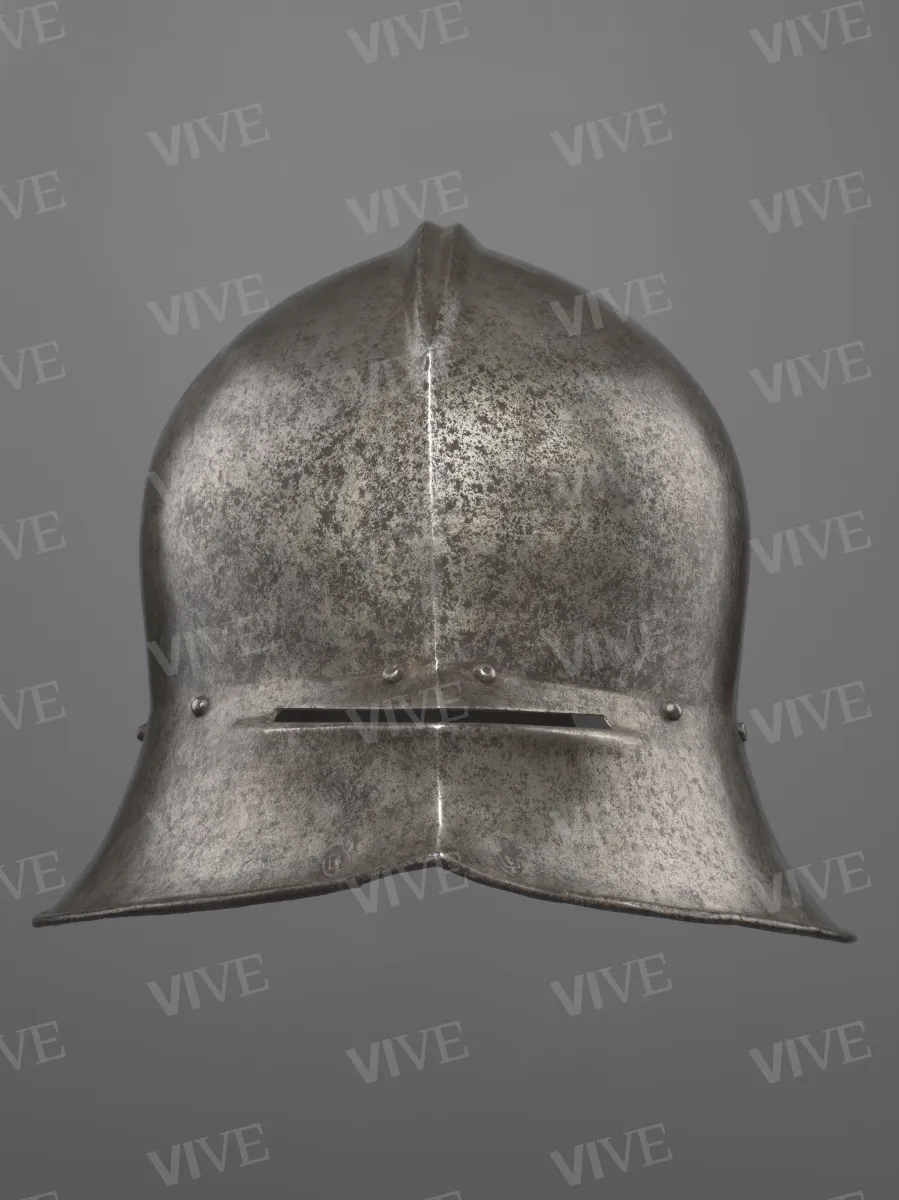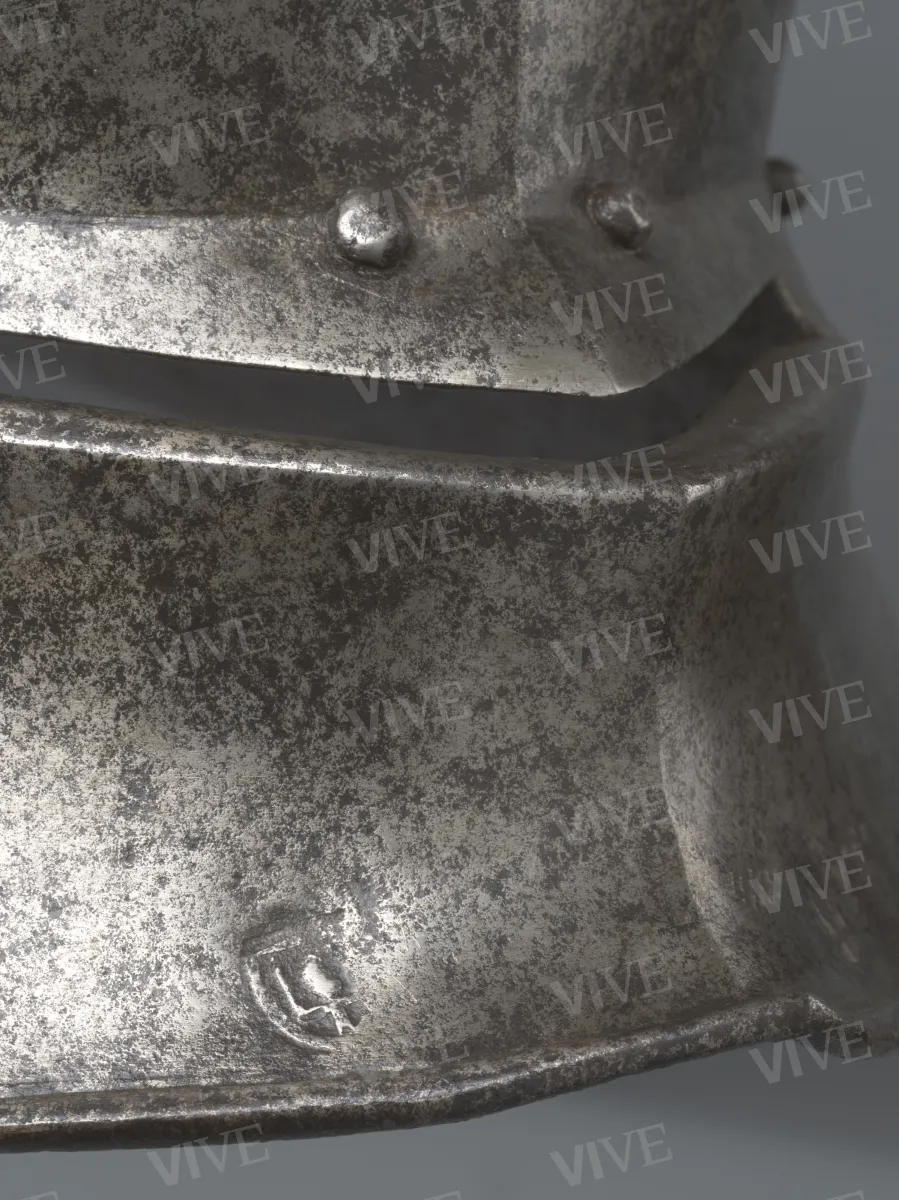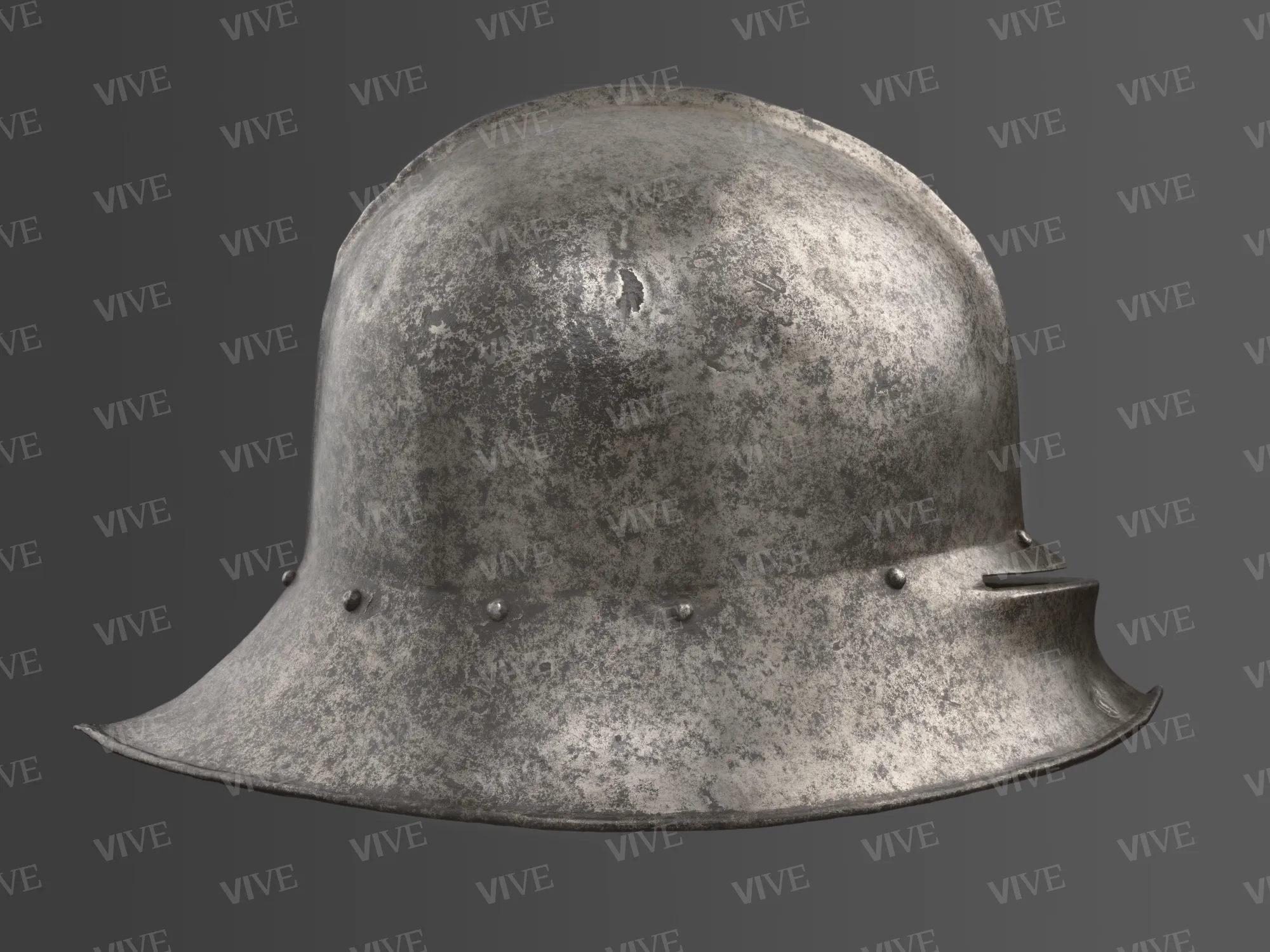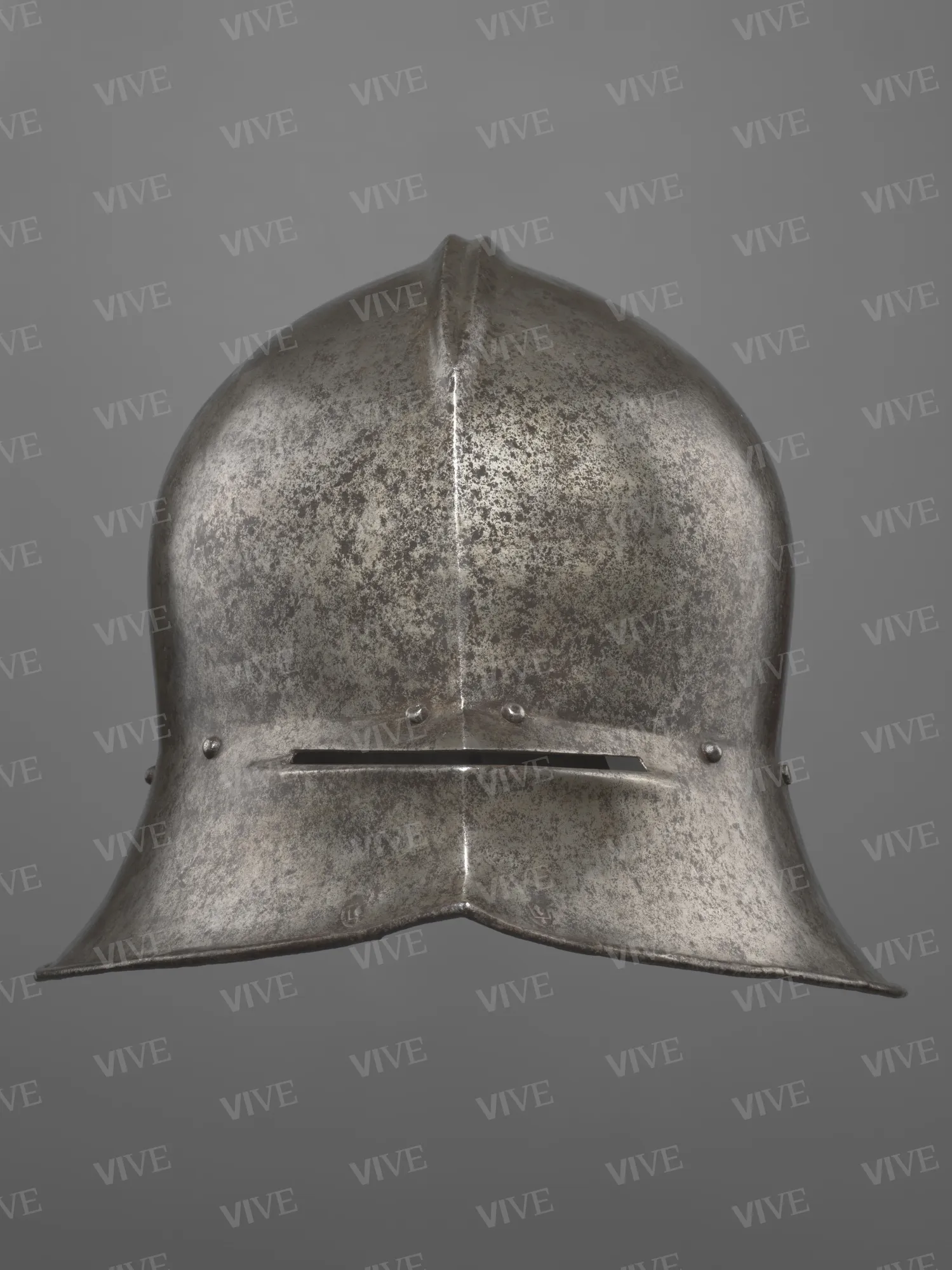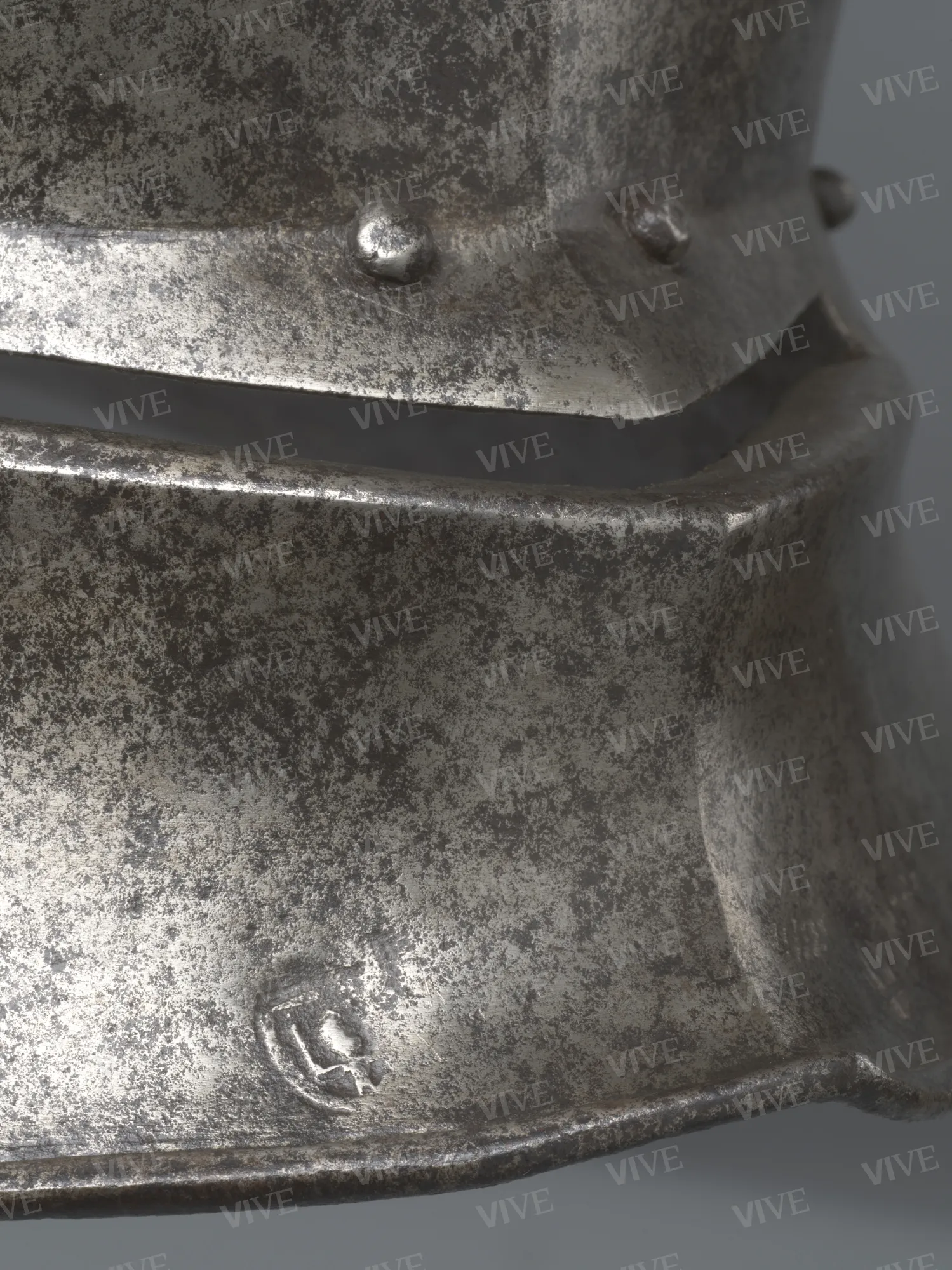Sallet
Austrian production 1440–1480
The sallet was a fifteenth-century helmet designed to safeguard soldiers’ heads in combat. This particular example, from Austria or Germany, features a straightforward design crafted as a single piece. It includes a deep slit at eye level to adequately protect the eyes while maintaining sufficient visibility.
The sallet was a fifteenth-century helmet designed to safeguard soldiers’ heads in combat. This particular example, from Austria or Germany, features a straightforward design crafted as a single piece. It includes a deep slit at eye level to adequately protect the eyes while maintaining sufficient visibility.
Details of work
Catalog entry
This sallet is forged in a single piece, featuring a narrow slit on one side for visibility and a moderately pronounced eave along the entire profile. The skull, just before the flare, has eleven rivets, known as vervelles, which were used to attach the false plate (the liner) of the helmet. Near the lower edge at the front, the weapon maker’s marks are clearly visible (two, paired just below the slit for the eyes; di Carpegna 1969, p. 9, n. 29; di Carpegna 1976, p. 9). The helmet is in good condition, showing only minor marks from blows to the shell.
The sallet is a type of war helmet that was extensively utilised across Europe during the fifteenth century. Initially crafted in the early fifteenth century in straightforward and functional designs, these helmets achieved an exceptional aesthetic pinnacle by the mid-sixteenth century, attracting the attention of renowned artists who contributed to their design and manufacture (Pyhrr 2000). Unlike other helmet types, which were generally heavier and more cumbersome, the sallet features no crest, top piece, or moving parts; it is fashioned from a single piece that could easily be lifted as needed (Gelli 1900, pp. 81–91; Oakeshott 2012, pp. 109–116). This practical design facilitated its widespread adoption both in Italy and Austria, where this particular example appears to originate.
Despite the brand not being recognized in existing literature, a comparison with other museum artifacts supports its attribution. An almost identical helmet, differing only in the shape of the rivets, is housed at the Metropolitan Museum in New York (La Rocca 2017, p. 46, fig. 54). The identification of the brand has allowed for its attribution to the workshop of Adrian Treytz the Elder (Innsbruck, active 1473–1492), thereby linking it to the Austrian context.
Comparable helmets are held at the Wallace Collection in London (Terjanian, 2013, p. 68, n. 3, inv. A.79) and at the Philadelphia Museum of Art (inv. 1977–167–62). These pieces have connections to southern Germany (Terjanian, 2013; Oakeshott, 2012, plate 7, n. B).
The celata is part of the collection originally assembled by Prince Ladislao Odescalchi (1846–1922). This collection was acquired by the Italian State in 1959 and subsequently transferred to Palazzo Venezia in 1969. It should be noted that this extensive collection was not a family armory but was the end result of eliberate acquisitions in both national markets (Florence, Rome) and international markets (Paris, London) beginning in the late nineteenth century (Barberini 2007), reflecting Odescalchi’s individual taste.
Giulia Zaccariotto
Entry published on 27 March 2025
State of conservation
Good.
Coats of arms, emblems, and marks
Beneath the carving, on either side, are two shield-shaped emblems featuring a pitchfork topped with an indeterminate symbol.
Provenance
Rome, Collezione Ladislao Odescalchi (Odescalchi, no. 760);
acquired by the Italian State, 1959;
Rome, Museo Nazionale di Palazzo Venezia, 1969.
Exhibition history
Rome, Museo Nazionale di Palazzo Venezia, Antiche armi dal sec. IX al XVIII. Già Collezione Odescalchi, May–July 1969;
Rome, Museo Nazionale di Castel Sant’Angelo; Rome, Museo Nazionale di Palazzo Venezia, Armi e potere nell’Europa del Rinascimento, July 26–November 11, 2018.
References
Gelli Jacopo, Guida del raccoglitore e dell’amatore di armi antiche, Milano 1900;
di Carpegna Nolfo (a cura di), Antiche armi dal sec. IX al XVIII. Già Collezione Odescalchi, catalogo della mostra (Roma, Museo Nazionale di Palazzo Venezia, maggio-luglio 1969), con schede a firma del curatore, Roma 1969, p. 9, n. 29;
di Carpegna Nolfo, Le armi Odescalchi, Roma 1976;
Pyhrr Stuart W., Eurpean Helmets, 1450-1650. Treasures from the Reserve Collection, New York 2000;
Barberini Maria Giulia, La collezione Odescalchi di armi antiche: storia della raccolta del principe Ladislao, in «Bollettino d’arte», s. VI, XCI, 2006 (2007), 137/138, pp. 101-114;
Fossà Bianca, Studio conservativo delle armi e armature Odescalchi. Nuove metodologie per la schedatura di una collezione, in «Bollettino d’arte», s. VI, XCI, 2006 (2007), 137/138, pp. 115-142;
Oakeshott Ewart, European Weapons and Armour. From the Renaissance to the Industrial Revolution, Woodbridge 2012;
Terjanian Pierre, The Helmsmiths of Frankfurt am Main, in London Park Lane Arms Fair, London 2013, pp. 66-74;
La Rocca Donald J., How to Read European Armor, New York 2017;
Scalini Mario (a cura di), Armi e potere nell’Europa del Rinascimento, catalogo della mostra (Roma, Museo Nazionale di Castel Sant’Angelo; Roma, Museo Nazionale di Palazzo Venezia, 26 luglio-11 novembre 2018), con schede a firma del curatore, Cinisello Balsamo 2018, p. 75, n. II.4.

